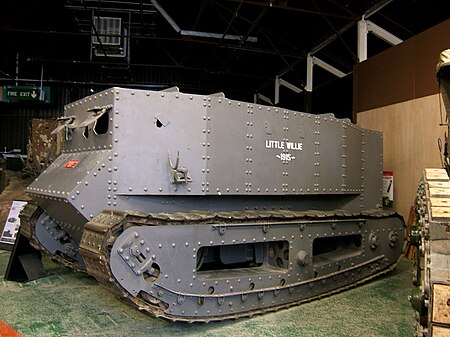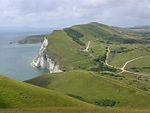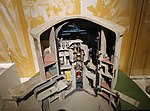Little Willie
History of the tankMilitary vehicles introduced in the 1910sTrial and research tanks of the United KingdomUse British English from February 2017World War I tanks of the United Kingdom

Little Willie was a prototype in the development of the British Mark I tank. Constructed in the autumn of 1915 at the behest of the Landship Committee, it was the first completed tank prototype in history. Little Willie is the oldest surviving individual tank, and is preserved as one of the most famous pieces in the collection of The Tank Museum, Bovington, England.
Excerpt from the Wikipedia article Little Willie (License: CC BY-SA 3.0, Authors, Images).Little Willie
King George V Road,
Geographical coordinates (GPS) Address Phone number Website Nearby Places Show on map
Geographical coordinates (GPS)
| Latitude | Longitude |
|---|---|
| N 50.6943 ° | E -2.24317 ° |
Address
The Tank Museum
King George V Road
BH20 6JG , Wool
England, United Kingdom
Open on Google Maps









